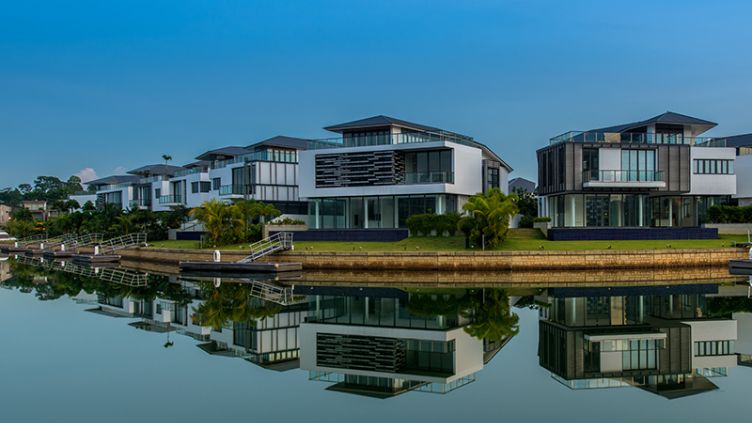The Infrastructure Effect on Real Estate Values
The recent announcement that Phase 1 of the Colombo Light Rail Transit (LRT) project has got the green light from government ministries, with projected commercial operations, of the first line, from Fort/Pettah to Malabe in 2024
The recent announcement that Phase 1 of the Colombo Light Rail Transit (LRT) project has got the green light from government ministries, with projected commercial operations, of the first line, from Fort/Pettah to Malabe in 2024, and travel times of around 30 minutes between the two termini, has already lead to widespread speculation that property prices will spike in areas that the line passes through. According to recent reports, phase one, will be fully elevated, with 16 stops over the 15.3 km total length, with construction commencing in 2020 at a cost of USD1.7 billion, funded by Japanese government loans, repayable over 40 years, at 0.1% interest, and with a 12-year initial grace period.
The correlation between real estate values and improved infrastructure is not a new phenomenon, and was first noticed in London when the first Metropolitan underground line opened in 1863. Infrastructure has subsequently become the lifeblood of prosperity and confidence, driving sustainability, and, by upgrading inadequate systems, removing transport bottlenecks, with significant lifestyle improvements for those who benefit. However, with half the world’s population now living in urban areas, and, this set to increase by 50%, from 4 billion to 6 billion, over the next 15 years, the speed and scale of urbanization poses enormous challenges for local governments.
This is especially true in monocentric cities, such as Colombo, where commercial activity is focused on a single CBD, as the pressure on existing infrastructure is more intense, and, the cost of construction, and disruption, during the construction phase, is much higher. Sustainability is driving urban planners to move towards a polycentric model, where cities have multiple commercial sub centres, or focal points, and perhaps this model is best illustrated in new cities, such as Dubai, which in addition to the Sheikh Zayed/DIFC CBD, has numerous sub commercial hubs including Business Bay, The Marina, Jumeirah Lakes and Jebel Ali.
If Colombo is to alleviate chronic congestion issues and move towards a more sustainable, environmentally friendly, polycentric model, improving living standards for residents and driving commercial efficiencies for businesses, the importance of an integrated LRT system cannot be overstated. The suburb of Malabe, according to online data, already enjoys projected, year on year, land price increases of 16%, with per perch prices already approaching LKR1 million. This is partly due to good access to the southern expressway, and, the proliferation of high tech IT and business parks providing excellent employment prospects for graduates from nearby educational institutions, but what will be the impact of the projected LRT terminal on real estate values?
In order to try and answer this question one needs to consider, both, history, and global case studies, for similar infrastructure improvements, in other geographies around the world.
In 1826 Johann Heinrich von Thunen developed the first mathematical model to explain agricultural land values in relation to distance from population centres, which became known as the Thunen Rings Principal. Much later, this principal was developed further by the American, William Alonso, in 1960, to become the Bid Rent Theory, which attempted to quantify land values in relation to distance from a CBD or major infrastructure improvement.
Curve A demonstrates that proximity to a major infrastructure improvement has less impact on the value of residential property, although the radius of influence in wider, while curve B shows that commercial property values rise higher than residential, although the radius of influence is narrower. In certain circumstances, where the infrastructure improvement may be a source of noise and air pollution, such as a major road, curve C demonstrates that there is an optimum distance from that source, for maximum value increase, too close and values may fall, due to adverse effects, too far and values begin to slide.
There have been numerous global studies on the impact of infrastructure improvements on property values, and, of course, there are a whole host of factors that influence the outcome, but interestingly, whether road or rail, and from such diverse geographies as Brazil, Sweden and Dubai, there is very close correlation demonstrating value increases of between 6 and 12%. A prime example is London, and the M25 orbital motorway, which enjoyed its 30th anniversary in 2016. Over the thirty-year period, since its opening, real estate values, for property in its vicinity, have risen a staggering 551%, or an average of 6% per annum, compounded.
Before jumping in and buying real estate in Malabe, or a nywhere else in Colombo, where infrastructure improvements are in the pipeline, it would be wise to consider two other interesting facts that emerge from such studies, that may influence your investment decision. Firstly, commercial real estate, and lands, benefit from higher rises than residential real estate when road and rail improvements are delivered, and, perhaps, even more importantly, rental rates rise more than sale values in the residential sector. Studies in Dubai showed that property sale values, within 0.5 km from Metro stations, actually fell, and the optimum distance for values to rise, was 1.0 to 1.5 km, while rental rates rose sharply for properties within a 0.5 km radius of these transport hubs. Accordingly, owner/occupiers and buy to let investors would do well to conduct their own research before accepting sales pitches, that include price rise projections, at face value.



